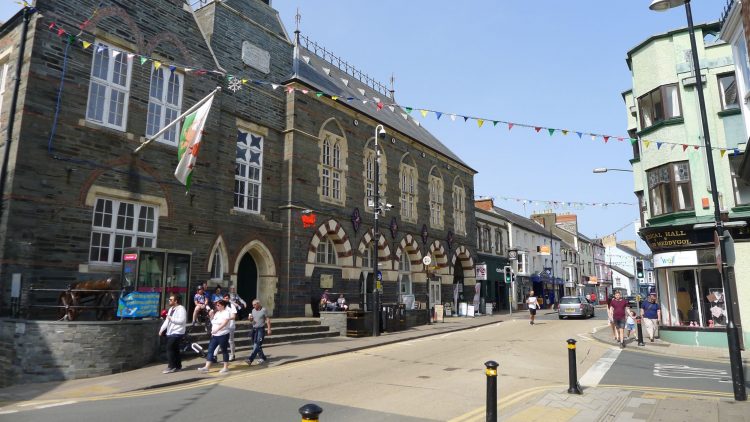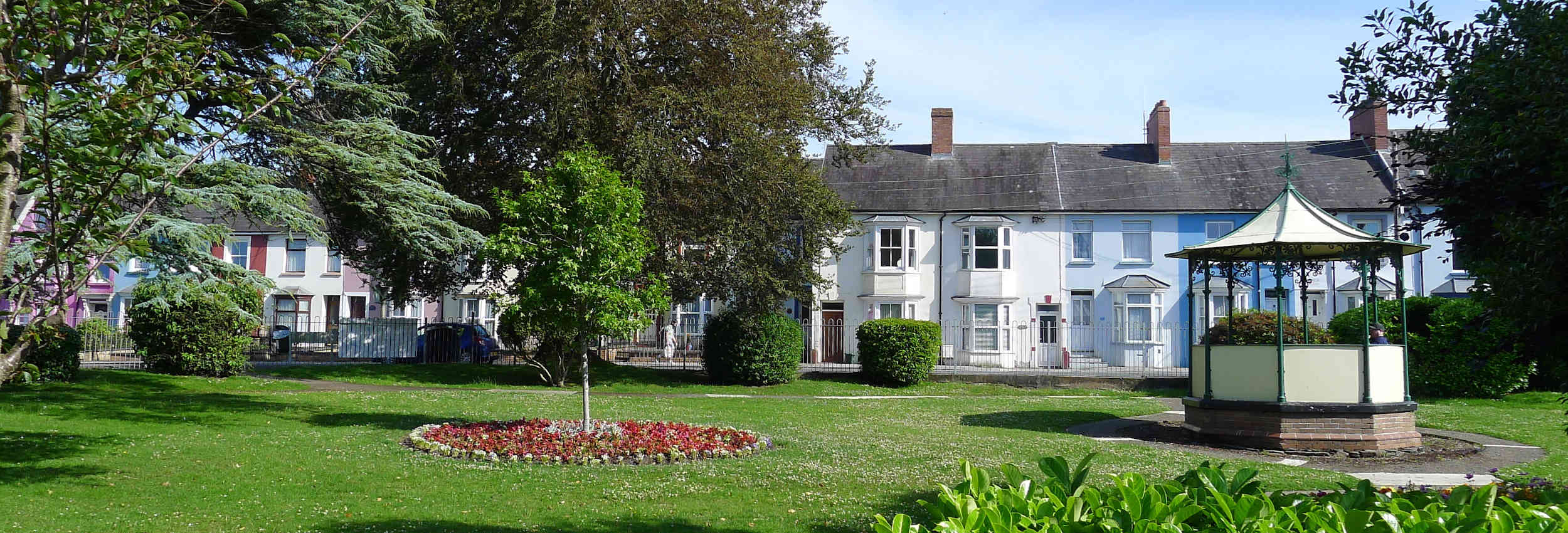History
Port of Cardigan
When the town of Cardigan was established in 1110 it became an important trading point. Woollen cloth was exported to Arras in France for use in the weaving of tapestries and commodities such as corn and limestone were imported. As early as the 14th Century, consignments of wine were recorded.
By Elizabethan times, Cardigan had grown into one of the most important ports in Wales, second only to Milford Haven, with authority over an area extending from Fishguard to Aberaeron. During the following century the shipbuilding industry became established and the port of Cardigan grew larger still dealing in commodities ranging from salt to prunes and from corn to tar. A customs house was built in St Mary Street to cope with the increased trade and the building is still standing today.
By the early 1800s, over 300 vessels were registered at the port of Cardigan and more than 1,000 men were employed here. The port bustled with rope makers, gas works, foundries, lime kilns, timber yards, saw mills, brick works, ship builders, smithies, warehouses, tanneries, malthouses and much more. Passengers landed and departed at Teifi Quay, indeed Cardigan became one of the country’s largest ports for transatlantic emigration, sending ships like Active and Albion to New Brunswick in Canada and the Triton to New York. Goods from all around the world sailed into Cambrian Quay, Lloyd’s Wharf dealt mostly with coal and local coastal trade, timber from the Baltic and North America was imported at Mercantile Quay, and ships carrying lime for building and agriculture landed at Mercantile Breakwater. Outstripping all British ports, except Bristol, Liverpool and London, Cardigan’s international trade links and ideal location brought unprecedented prosperity to the area. The ship building industry was concentrated at Netpool (now a park) and further downstream at St Dogmaels. Hundreds of ships were built on the Teifi – some of these up to 400 tonnes.
When the Teifi estuary began to silt up making access difficult for larger ships, and the railway came to Cardigan in 1886 the port began to decline and within just 20 years there was little left of the trade that had once been greater than most British ports. By the turn of the 20th century the Netpool, where hundreds of ships had been built, had already become a recreational area.
Today the quays are in the process of renovation and provide a seating and performance area, a pontoon for boat trips, and pleasant walks along the riverside. The river is used regularly for leisure pursuits such as fishing, kayaking and sailing.
Cardigan’s long connection with the sea and river has begun to be documented in a heritage project called Over the Waves
Guildhall and Market Hall
Cardigan’s Guildhall and Market Hall were commissioned in 1856. This was the first civic building in Britain in the ‘modern Gothic’ style advocated by John Ruskin and is still noted as an exceptional rarity in the context of Gothic public buildings by experts in Victorian architecture. An Arabic influence can be seen in the arch decoration in both buildings. The design attracted national interest, an illustration being featured in The Building News of 1859. The buildings are constructed from slate quarried at nearby Cilgerran and Bathstone.

The site chosen for the new public buildings and markets in 1855 was known as Free School Bank, a slope just beyond the site of the North Gate of the mediaeval town. At the time the site was occupied by the grammar school and a coach house with open ground behind.
The foundation stone was laid by the Mayor R D Jenkins amongst many celebrations. The bells were rung in St Mary’s church, three rounds were shot from the cannon, a cask of porter was distributed among the workmen, the streets were decorated and there was a procession around the town.
The site comprised a meat market, corn exchange and store, grammar school, community meeting room, library, council meeting room, reading room and public hall, far more than the usual ‘hall over a market’, which was common at the time.
Cannon The Russian cannon, given to the town in 1857 in memory of Cardigan soldiers’ sacrifices in the Crimean War, was finally installed in front of the Guildhall in 1871. The gun had been used in the Battle of the Light Brigade, during the famous charge at Balaclava.
Clock Tower A clock, now known as the Whiskey Clock, was offered to the town by wine and spirit merchant David Davies when he became mayor in 1890 and this was installed over the entrance bay between the school and the corn exchange.
The four iron clock faces are four feet wide with copper hands and opaque glass, and was illuminated originally with gas light. On top is a pierced weather-vane with the ship and castle from the town seal.
After substantial restoration in 2008, the Guildhall is now a thriving venue and art gallery. The Market Hall houses over 30 different stalls including fresh local produce, crafts and services.
Cardigan Castle
The first castle at Cardigan was 1km downstream of the present site in the town. It was a wooden castle built by the Normans on the site of an earlier Iron Age settlement. The present site was considered more suitable and Gilbert de Clare built a second wooden castle here in 1100.
In 1136, Lord Rhys ap Gruffydd, prince of Deheubarth, marched south and defeated the Norman’s at the battle of Crug Mawr (just two miles north of the town). He took Cardigan Castle and began rebuilding it in stone. To celebrate when the Castle was finished, Lord Rhys held what we now recognise as the First Eisteddfod inviting poets and musicians to compete.
Rhys’ death in 1197, resulted in another period of conflict. His sons, Maelgwyn and Gruffydd, fought over their inheritance and this resulted in the sale of the Castle to King John of England.
The mid 13th Century, however, saw the Castle once again in the hands of the Normans. Two towers, a new keep and the town wall were all built to create a stronghold, the ruins of which are still visible today. By the end of the 13th century King Edward I had laid claim to the castle and control reverted to the English.
During the English Civil War Oliver Cromwell’s Roundheads largely destroyed the Castle and, later, parts of it were used as an administrative centre, a jail and a public space with a bowling green. In the early 1800s a private mansion was built on the property and the Castle entered a more peaceful phase.
Recently Cardigan Castle has been the subject of considerable renovation and opened its doors to the public early in 2015. The site now exhibits all the phases of its built heritage from Mediaeval times to World War II. The castle also hosts a range of cultural events.
Cilgerran Castle
Cilgerran is first mentioned by name in 1164, when Lord Rhys captured the castle. It was retaken by William Marshal, earl of Pembroke, in 1204, only to be taken again by the Welsh during Llywelyn the Great’s campaigns in 1215. However, eight years later, William’s son, another William, regained control, and it was probably he who built the imposing masonry castle we see today. The form of the present castle may well reflect that of the earlier earthwork castle.
In the 1370s an invasion from France was feared, and Edward III ordered that the now rather derelict Cilgerran be refortified. In the Tudor period, the Vaughan family were granted the castle by Henry VII, and they continued to occupy it until the early 17th century, when they built a new house nearby. The castle fell into ruin, but its picturesque setting made it an early favourite among tourists who, from the 18th century, could visit by boat from Cardigan.
Cilgerran Castle is now managed by the National Trust and is open to the public.


